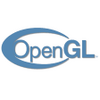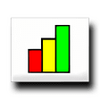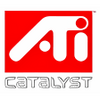An open source, application-programming interface that's great at scaling vector 2D and 3D graphics
An open source, application-programming interface that's great at scaling vector 2D and 3D graphics
Popular programs in Graphics Cards
What is OpenGL
OpenGL is an open-source graphics library and application programming interface designed to provide high-quality three-dimensional (3D) graphics. The download includes a number of libraries and files that are needed to support programming in OpenGL. It does not contain device-specific drivers. This is because nearly all computers today come with OpenGL drivers built into the basic operating system or attached to the graphics card drivers. Installation is very easy and is done through a self-extracting executable file. Users really do not have to do anything beyond starting the installer. It is normally necessary to restart the computer after installing OpenGL.
One of the main benefits of installing OpenGL on a computer is better performance. OpenGL has been designed to be an optimized interface for programming graphics. OpenGL often provides better frame rates and lower rendering times than some proprietary libraries such as DirectX from Microsoft. OpenGL is also a cross-platform graphics solution. A version of OpenGL exists for nearly every operating system available to consumers today. This means programs can be more easily ported between operating systems without having to create custom graphics modules for each one. OpenGL drivers are even available for mobile devices.
OpenGL has a very wide range of capabilities when used for graphics programming. OpenGL can easily support fast two-dimensional graphics on any screen. It also has a number of 3D functions that make creating scenegraphs or 3D applications much easier. OpenGL has a relatively small number of core functions to understand and learn. This is very convenient, especially when compared to larger and more-complex competing packages. OpenGL includes support for custom features of different graphics cards like optimized shaders and dual processors. OpenGL allows developers to have a very granular level of control over almost every graphics function, from building an array of vertices to managing the color depth of buffers.
Another advantage is that OpenGL is open-source software. This means developers do not have to pay any fees to use and distribute programs built with the software. This is very different from some proprietary solutions that require developer or licensing fees. OpenGL is also flexible when it comes to hardware. The drivers and libraries are specifically designed to adapt to any system. OpenGL can revert to pure software emulation if no graphics card is found. Programmers can specify minimum and maximum operating parameters within an application so that OpenGL functions as intended. This flexibility makes OpenGL a very attractive option for developing graphical applications and games.
There are a few drawbacks when it comes to downloading OpenGL. The first is that other downloads are necessary to start developing OpenGL programs. Every language has an OpenGL wrapper and application programming interface that needs to be installed. This wrapper allows the language to access the functions in the OpenGL library. Another complication is that getting OpenGL to work in some integrated development environments can be difficult especially for beginners. OpenGL is still one of the most widely used and freely accessible graphics programming libraries available today.
Pros
- Simple installer
- Open source
- Allows for cross-platform development
Cons
- Requires additional downloads
- Learning OpenGL can be confusing at first
- No basic documentation






